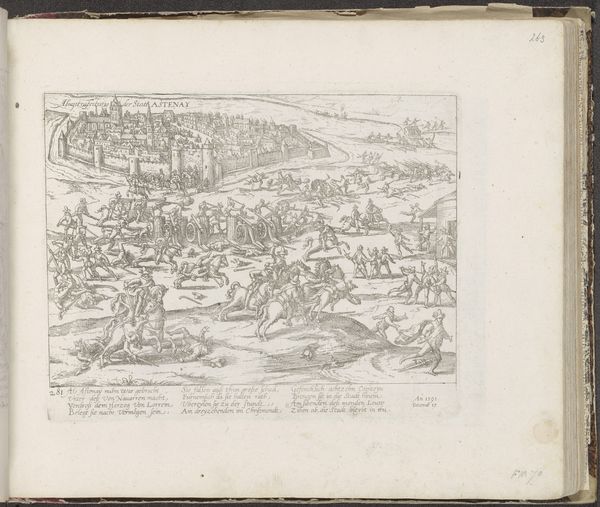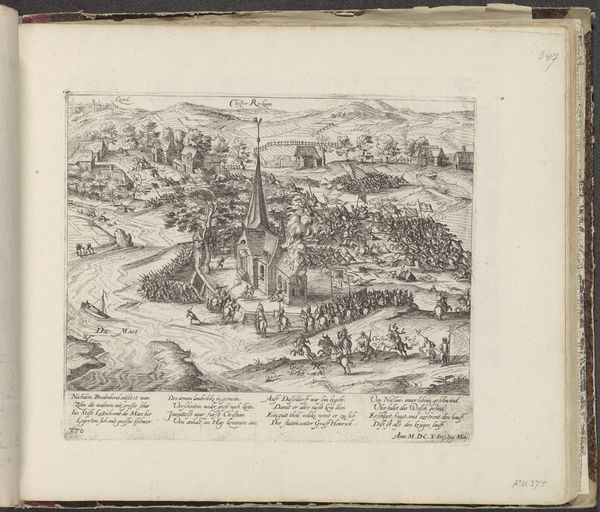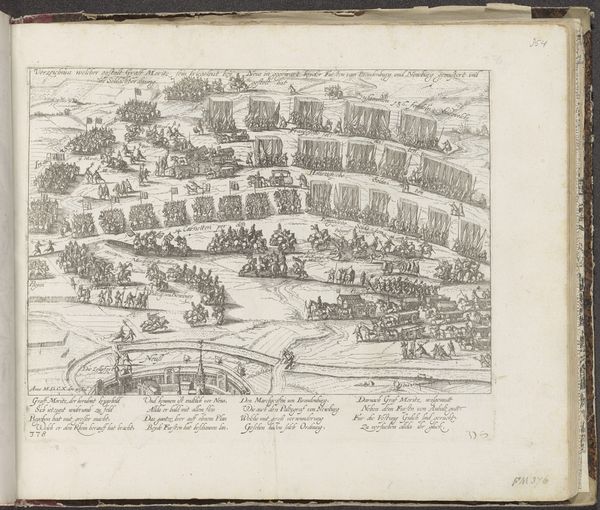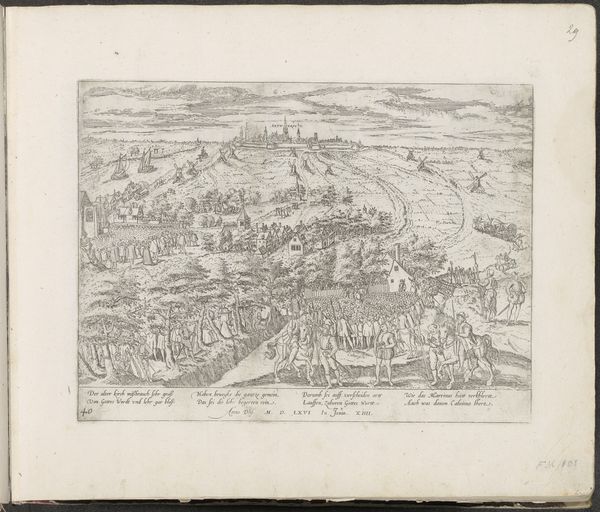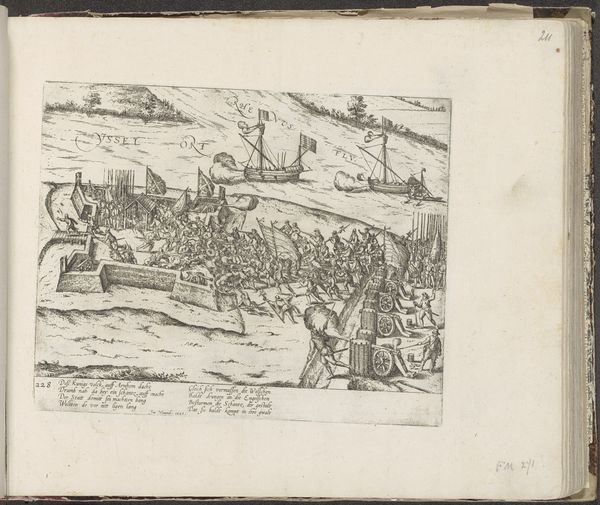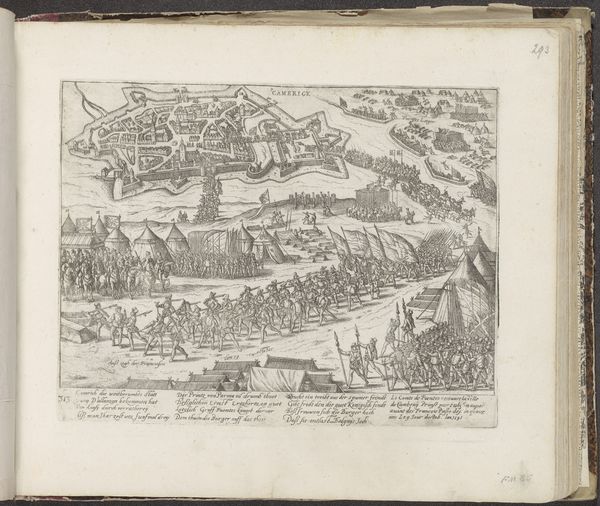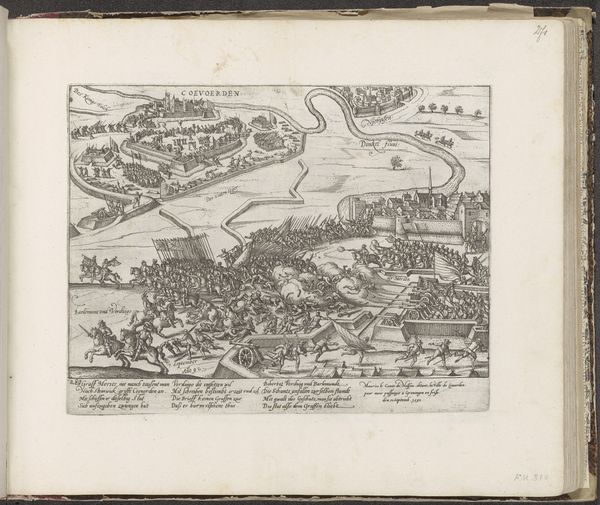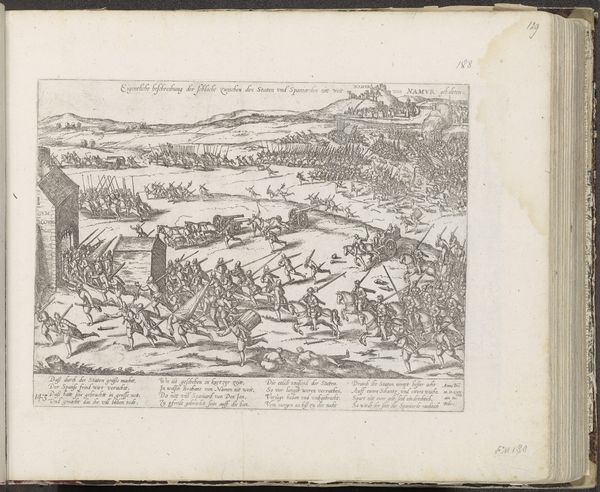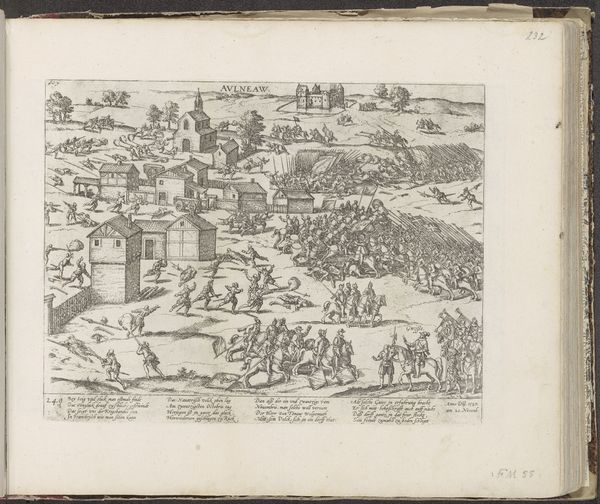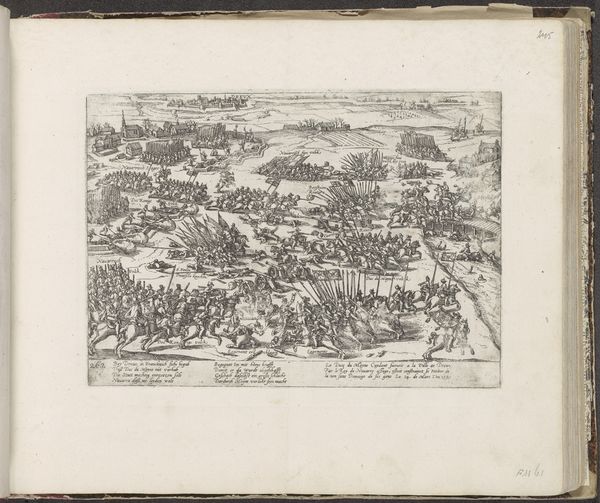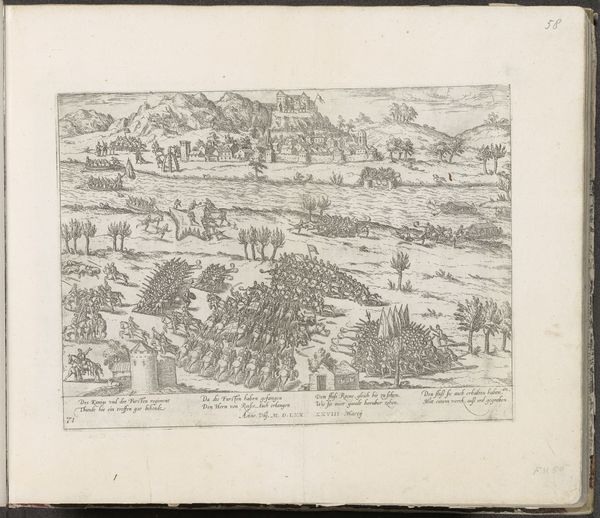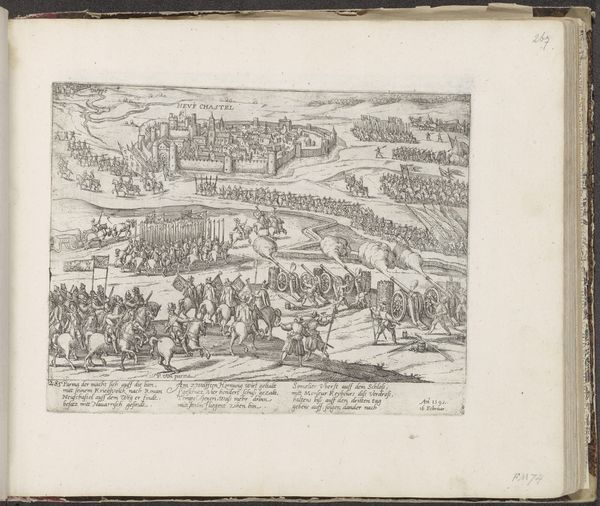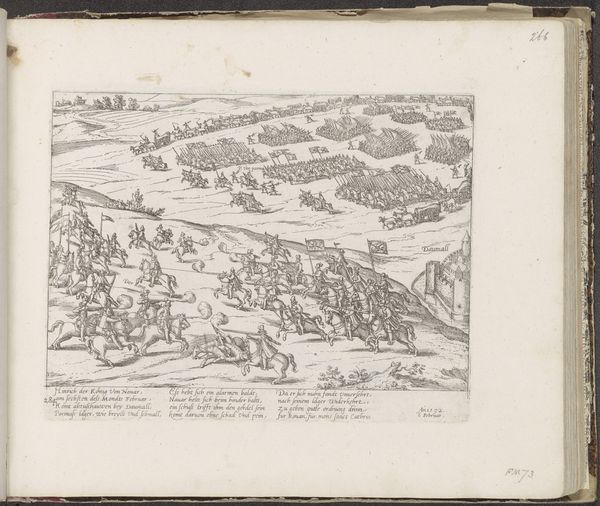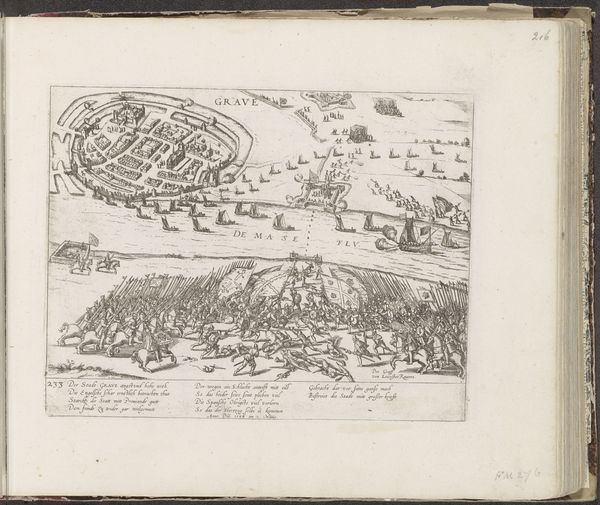
Aftocht van de hertog van Saksen uit Schloss Erprath, 1585 c. 1587 - 1591
0:00
0:00
print, engraving
#
narrative-art
# print
#
landscape
#
cityscape
#
northern-renaissance
#
engraving
Dimensions: height 219 mm, width 266 mm
Copyright: Rijks Museum: Open Domain
Curator: Before us is "Aftocht van de hertog van Saksen uit Schloss Erprath, 1585," or "Departure of the Duke of Saxony from Erprath Castle, 1585" by Frans Hogenberg. Created sometime between 1587 and 1591, this engraving offers a bird's eye perspective on a pivotal historical moment. It’s currently held at the Rijksmuseum. Editor: My first impression is that this engraving evokes a sense of formality and meticulous documentation. The crisp lines and overall symmetry give it a distinctly regulated feel, almost like a strategic map. Curator: Exactly! Let’s start by analyzing the spatial arrangement. Hogenberg utilizes a high vantage point which grants comprehensive visibility. The castle acts as a fulcrum around which the human figures gather and depart. Notice also the sharp contrast of light and dark etching in the textures, defining shapes with the precise lines typical of Northern Renaissance engravings. Editor: Yes, the symbolism embedded here is particularly evocative. A duke's departure from a castle usually denotes shifts in power or alliances. The movement, those regiments on horseback and on foot, clearly convey that message. I also note the prominent cannons in the foreground. They stand for more than brute force; it’s about the display of military and sovereign capability, too. Curator: And note how these groupings function compositionally. See the balanced masses of the figures which draw the eye diagonally through the work, connecting the architectural core to the distant open landscape. This deliberate compositional arrangement speaks to the broader theme of how humans interact with, and assert themselves within, geographical space. The lines themselves, etched to form shading and textures, have an expressive, vital quality. Editor: Considering that it comes from the late 16th century, the symbolic intent of portraying ducal power struggles through the imagery of departure feels especially relevant. A scene like this underscores how personal decisions ripple into broader political realities. It also taps into our enduring interest in seeing authority at a remove, viewed from a safe vantage. Curator: Indeed. The precision in Hogenberg's linework shows his command over the medium, but his art is also of rendering depth and detail using a stark, restricted vocabulary. Editor: Analyzing this work, I am left reflecting on how symbols persist across centuries. An image of a Duke, a Castle, military march are forever interwoven into our sense of status, power, and narrative in ways that speak even now. Curator: Precisely. The intersection of careful formalism and symbolic content transforms a seemingly documentary work into something truly remarkable.
Comments
No comments
Be the first to comment and join the conversation on the ultimate creative platform.
